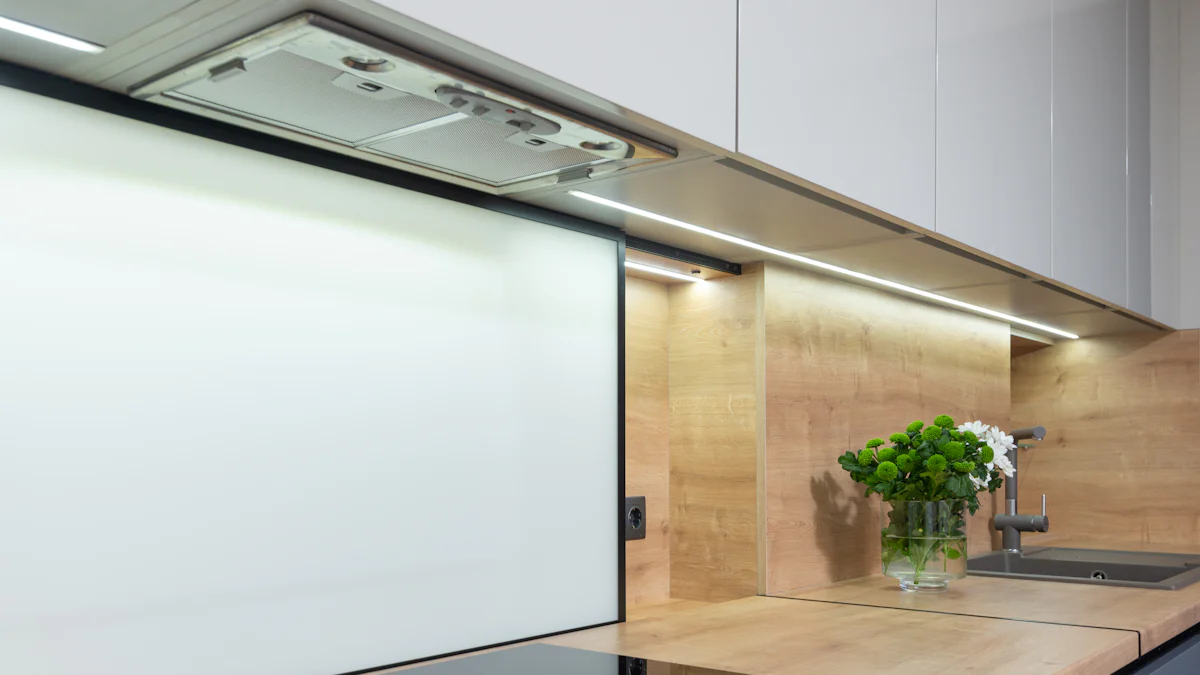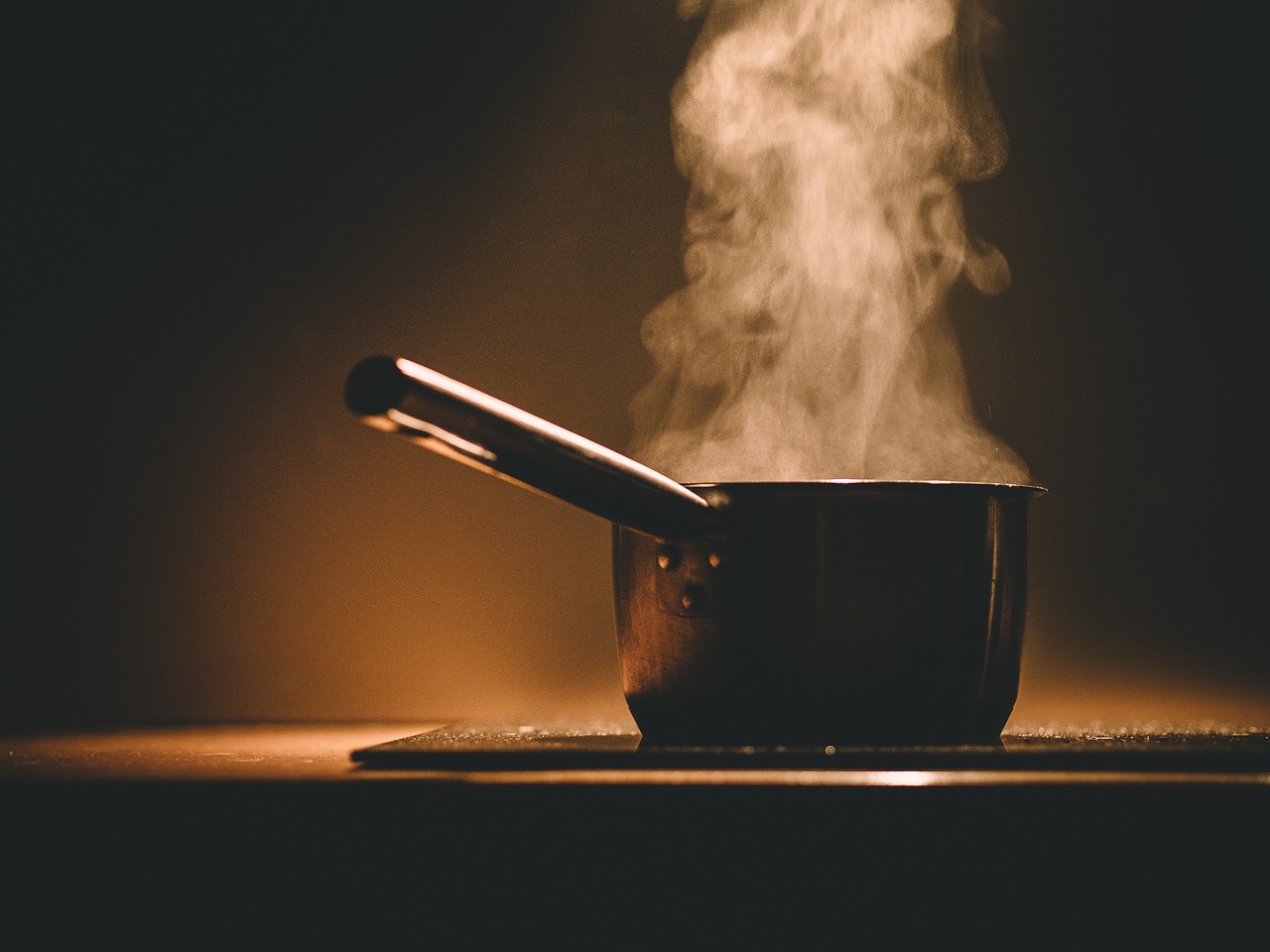Are Electric Downdraft Cooktops Worth It Pros and Cons Explained

If you’re looking for a cooking solution that saves space and adds a modern touch to your kitchen, an electric downdraft cooktop might be just what you need. These cooktops are perfect for compact kitchens because they eliminate the need for bulky overhead hoods. Plus, they improve air quality by pulling smoke and odors directly from the source. Their sleek design blends seamlessly with countertops, giving your kitchen a clean, minimalist look. Whether you’re redesigning your space or upgrading appliances, this innovative option could be worth considering.
Key Takeaways
Electric downdraft cooktops save space by combining cooking and venting. They are great for small or open kitchens.
Their stylish design makes kitchens look modern and simple. You don’t need big overhead hoods with these cooktops.
Cleaning is easy because of their smooth surfaces and built-in vents. This saves time and effort on maintenance.
These cooktops are best for light or medium cooking. They may not handle heavy smoke or tall pots well, so think about your cooking needs first.
Installing them can be tricky and expensive. You might need special ducts, so plan your budget before buying.
What Is an Electric Downdraft Cooktop?
If you’re unfamiliar with electric downdraft cooktops, they’re a modern twist on traditional cooking appliances. These cooktops combine cooking zones with a built-in ventilation system that pulls smoke, steam, and odors directly from the cooking surface. This eliminates the need for a bulky overhead hood, giving your kitchen a cleaner and more open look. They’re perfect for anyone who values both functionality and aesthetics.
How Downdraft Cooktops Work
Downdraft cooktops rely on an integrated ventilation system to manage cooking byproducts. When you turn on a burner, the downdraft mechanism activates. It creates a downward airflow that pulls smoke, steam, and odors across the cooking surface and into a vent system. This vent system directs the air outside or filters it before recirculating it back into your kitchen. The process is seamless and keeps your kitchen air fresh while you cook.
The main components that make this possible include:
Ventilation System: Powerful fans and filters handle smoke and odors.
Downdraft Mechanism: This creates the downward airflow.
Cooking Zones: These burners or induction elements ensure efficient heat distribution.
Key Features of Downdraft Cooktops
What sets downdraft cooktops apart is their ability to combine cooking and ventilation in one appliance. They often use advanced induction technology, which provides precise temperature control and even heat distribution. This makes them versatile for various cooking tasks. Plus, their sleek design integrates seamlessly with countertops, enhancing your kitchen’s overall appearance.
Differences Between Downdraft and Traditional Cooktops
Unlike traditional cooktops that rely on overhead hoods to vent rising air, downdraft cooktops pull air downward. This method captures smoke and odors directly at the source, making it more efficient. Traditional setups often require a separate hood, which can take up space and disrupt the kitchen’s aesthetic. Downdraft cooktops, on the other hand, offer a cleaner and more minimalist look while maintaining functionality.
Pros of Downdraft Cooktops

Space Efficiency
Ideal for Compact Kitchens
If you’re working with a small kitchen, a downdraft cooktop can be a game-changer. Its compact design integrates ventilation directly into the appliance, saving you from the hassle of installing a bulky overhead hood. This feature opens up your kitchen, making it feel more spacious and less cluttered. Whether you’re dealing with limited counter space or a tight layout, downdraft cooktops fit right in without compromising functionality.
Eliminates Overhead Ventilation Needs
Say goodbye to traditional downdraft range hoods that take up valuable space. Downdraft vent systems pull smoke and odors downward, eliminating the need for overhead ventilation. This not only frees up room but also allows for more flexible kitchen layouts. You can even install these cooktops on an island or in open-concept spaces without worrying about obstructing your view or design flow.
Sleek Design
Modern and Minimalist Aesthetic
Downdraft cooktops are perfect if you’re aiming for a compact and stylish kitchen. Their sleek, modern design enhances the overall look of your space, creating a clean and uncluttered environment. By eliminating the need for overhead hoods, these cooktops maintain a minimalist aesthetic that blends seamlessly with contemporary kitchen styles.
Seamless Integration With Countertops
One of the standout features of downdraft models is how effortlessly they integrate with countertops. The built-in ventilation system keeps everything streamlined, ensuring your kitchen looks polished and sophisticated. This design is especially beneficial in open-concept kitchens, where maintaining a cohesive and elegant appearance is key.
Easy Maintenance
Fewer Components to Clean
Cleaning a downdraft cooktop is much simpler compared to traditional setups. Since there’s no overhead hood, you won’t have to deal with greasy residue buildup in hard-to-reach places. The integrated ventilation system focuses on the stovetop area, making maintenance straightforward and hassle-free.
Smooth Surface for Quick Cleaning
Most downdraft cooktops feature glass-ceramic surfaces, which are easier to clean than traditional materials. A quick wipe is often all it takes to keep the surface spotless. This design not only saves you time but also ensures your cooktop stays looking brand new with minimal effort.
Flexible Ventilation
Suitable for Open-Concept Kitchens
If you have an open-concept kitchen, a downdraft cooktop can be a fantastic choice. These cooktops integrate the ventilation system directly into the appliance, so you don’t need a separate hood. This design keeps your kitchen looking sleek and modern. Without a bulky overhead hood, you’ll enjoy a clutter-free space that feels more open and inviting.
Downdraft vent systems also offer flexibility in how you arrange your kitchen. You can place your cooktop wherever it works best for you without worrying about installing a hood above it. This is especially helpful in open-concept designs where maintaining a seamless flow between the kitchen and living areas is key. Plus, when the ventilation system isn’t in use, it blends right into the countertop, keeping everything streamlined and polished.
Works Well With Island Installations
Planning to install a cooktop on your kitchen island? Downdraft models are perfect for this setup. Traditional downdraft range hoods can obstruct your view and make the space feel cramped. With a downdraft vent system, you won’t have that problem. The ventilation pulls smoke and odors downward, so there’s no need for an overhead hood.
This setup not only keeps your island looking clean but also makes it more functional. You can cook, entertain, and interact with guests without a hood blocking your line of sight. It’s a great way to create a social and practical cooking space. Whether you’re preparing a quick meal or hosting a dinner party, a downdraft cooktop on your island ensures your kitchen stays stylish and efficient.
Cons of Downdraft Cooktops
Ventilation Limitations
Less Effective for Heavy Smoke or Grease
Downdraft cooktops can struggle when it comes to handling heavy smoke or grease. Unlike traditional downdraft range hoods, which rely on overhead suction, these cooktops use downward airflow. This design works well for light cooking but may not capture all the byproducts from frying or grilling. If you frequently cook meals that produce a lot of smoke or grease, you might find the effectiveness of downdraft vent systems lacking.
Struggles With Tall Cookware
Tall pots and pans can also pose a challenge. The downward suction may not reach the top of taller cookware, leaving steam and odors to escape into your kitchen. This limitation can be frustrating if you often cook soups, stews, or other dishes that require large pots. For these situations, traditional overhead systems might provide more effective ventilation.
Installation Challenges
Requires Specialized Ductwork
Installing a downdraft cooktop isn’t as straightforward as it might seem. You’ll need specialized ductwork to route the ventilation properly. This can be especially tricky if you’re retrofitting the cooktop into an existing kitchen. Without the right setup, the downdraft vent systems may not perform as intended.
Higher Installation Costs
The complexity of installation often leads to higher costs. Professional help is usually necessary to ensure the ductwork and ventilation are installed correctly. These additional expenses can make downdraft models a less budget-friendly option compared to traditional setups.
Limited Compatibility
Not Ideal for All Kitchen Layouts
Downdraft cooktops aren’t a one-size-fits-all solution. They work best in open-concept or island setups but may not suit every kitchen layout. If your kitchen has limited space for ductwork or specific design constraints, you might face compatibility issues.
Unsuitable for High-Heat Cooking
If you’re a fan of high-heat cooking methods like searing or stir-frying, a downdraft cooktop might not meet your needs. The ventilation system may struggle to keep up with the intense smoke and odors these techniques produce. For heavy-duty cooking, traditional downdraft range hoods often provide more effective ventilation.
Higher Initial Investment
More Expensive Than Standard Cooktops
When it comes to cost, downdraft cooktops tend to sit on the higher end of the price spectrum. If you’re comparing them to standard cooktops, you’ll notice a significant difference in price. This is because downdraft models combine two functions—cooking and ventilation—into one appliance. That added functionality doesn’t come cheap.
You’re not just paying for a cooktop; you’re investing in a built-in downdraft vent system. This advanced feature drives up the price tag. While standard cooktops focus solely on cooking, downdraft cooktops offer the convenience of integrated ventilation. If you’re on a tight budget, this higher upfront cost might make you think twice. However, if you value space-saving and sleek design, the investment could be worth it.
Additional Costs for Ventilation Systems
The initial price of a downdraft cooktop isn’t the only expense you’ll face. You’ll also need to account for the cost of the ventilation system. Depending on your kitchen’s layout, you might need specialized ductwork to ensure the downdraft vent system works efficiently. This can add a significant amount to your overall expenses.
If your kitchen isn’t already set up for a downdraft model, you’ll likely need professional installation. This isn’t a DIY-friendly project. Hiring experts to handle the ductwork and installation can quickly increase your costs. While the sleek design and functionality of downdraft cooktops are appealing, the additional expenses for proper ventilation might make them less attractive if you’re trying to stick to a budget.
Tip: Before purchasing, consider all the associated costs, including installation and ductwork. This will help you avoid surprises and plan your budget effectively.
Who Should Consider a Downdraft Cooktop?
Homeowners With Small or Open-Concept Kitchens
If your kitchen is small or designed with an open concept, a downdraft cooktop could be a perfect fit. These cooktops combine cooking and ventilation into one appliance, eliminating the need for a bulky hood or exhaust fan. This makes them ideal for kitchens with limited counter space. Their compact design doesn’t just save space—it also keeps your kitchen functional and efficient.
You’ll also love how seamlessly they blend into your countertops. When not in use, they stay out of sight, giving your kitchen a sleek and polished look. This is especially helpful in open-concept layouts where maintaining a clean, unobstructed view is important. Plus, downdraft cooktops improve air quality by capturing smoke, steam, and odors right at the source. Whether you’re cooking on an island or a peninsula, these cooktops adapt to your layout and ductwork setup, offering flexibility and convenience.
Those Who Value Aesthetics Over Heavy Ventilation
If you prioritize style and design over heavy-duty ventilation, a downdraft cooktop might be just what you need. These cooktops are designed to enhance your kitchen’s aesthetic with their modern and minimalist appearance. They integrate directly into your countertops, creating a streamlined and clutter-free look.
For those who love a clean and elegant kitchen, downdraft cooktops deliver. They avoid the visual disruption of traditional hoods, making them a great choice for open-concept spaces. Whether you’re aiming for a sleek, contemporary vibe or simply want your kitchen to look more spacious, these cooktops add a touch of sophistication. Their built-in design ensures they stay out of the way, letting other design elements in your kitchen shine.
Light or Occasional Cooks
If you cook occasionally or prefer lighter meals, a downdraft cooktop could suit your needs perfectly. Its space-saving design integrates ventilation directly into the appliance, freeing up valuable kitchen space. This makes it a practical choice for those who don’t need heavy-duty cooking equipment.
You’ll also appreciate its sleek appearance. It blends effortlessly into your countertops, giving your kitchen a modern and tidy look. Even if you’re not a frequent cook, you’ll benefit from the improved air quality it provides. By capturing smoke, steam, and odors, it creates a healthier and more pleasant cooking environment. For light or occasional cooking, a downdraft cooktop offers the perfect balance of style and functionality.
Individuals Willing to Invest in Custom Installations
If you’re ready to go the extra mile for a custom kitchen setup, a downdraft cooktop could be a fantastic choice. These appliances offer flexibility and style, but they do come with specific installation needs. Here’s what you should keep in mind before diving in.
Layout Flexibility: Downdraft cooktops can be installed on islands or peninsulas, giving you more freedom to design your kitchen. Whether you want a central cooking station or a sleek corner setup, these cooktops adapt to your vision.
Ventilation Options: Depending on your kitchen’s layout, you can choose between exterior venting or recirculation systems. Exterior venting directs air outside, while recirculation uses filters to clean and return air to your kitchen.
Tip: If you’re unsure which ventilation option suits your space, consult a professional to evaluate your kitchen’s design and airflow needs.
Beyond functionality, downdraft cooktops shine in the aesthetics department. Their modern design enhances your kitchen’s elegance, blending seamlessly with countertops. You’ll find options in gas, electric, and induction models, so you can pick one that matches your cooking style. However, keep in mind that these cooktops may not handle heavy smoke or odors as effectively as traditional hoods.
Before committing, consider these factors:
Kitchen Design: Does your kitchen have the space and ductwork to accommodate a downdraft cooktop?
Cooking Habits: If you frequently cook with high heat or heavy grease, you might need additional ventilation support.
Budget: Custom installations can be pricey. Factor in the cost of the cooktop, ductwork, and professional installation.
A downdraft cooktop is an investment in both style and functionality. If you’re willing to customize your kitchen to fit this appliance, it can elevate your cooking space while keeping it sleek and efficient.
Electric downdraft cooktops bring a lot to the table, especially if you’re after space efficiency and a sleek, modern kitchen design. They’re compact, easy to clean, and work well in open-concept layouts or islands. However, they’re not without their challenges. Ventilation struggles with heavy smoke, installation costs, and compatibility issues can make them less appealing for some kitchens.
To decide if they’re worth it, think about your kitchen design, cooking habits, and budget. If you value aesthetics and light cooking over heavy-duty ventilation, this appliance might be a great fit. Carefully weigh the pros and cons to see if it aligns with your needs.
FAQ
Are downdraft cooktops suitable for all types of cooking?
Downdraft cooktops work best for light to moderate cooking. They may struggle with heavy smoke or grease from high-heat methods like frying or searing. If you often cook with tall pots or use intense heat, you might need additional ventilation support.
Can I install a downdraft cooktop in an existing kitchen?
Yes, but it might require modifications. Downdraft cooktops need specialized ductwork, which could involve changes to your kitchen layout. Professional installation ensures proper setup. If your kitchen isn’t prepped for this, expect higher installation costs.
Do downdraft cooktops require a lot of maintenance?
Not at all! Their smooth surfaces and integrated ventilation make cleaning easy. A quick wipe keeps the cooktop spotless. Plus, there’s no overhead hood to clean, so you’ll spend less time scrubbing grease and grime.
Are downdraft cooktops energy-efficient?
Yes, many models use energy-efficient technologies like induction cooking. These cooktops heat quickly and evenly, reducing energy waste. However, the built-in ventilation system might consume additional power, so it’s worth checking the energy ratings before buying.
Can I use a downdraft cooktop in a small kitchen?
Absolutely! Downdraft cooktops are perfect for compact spaces. They eliminate the need for bulky overhead hoods, freeing up room and creating a more open feel. Their sleek design integrates seamlessly with countertops, making them a smart choice for small kitchens.
See Also
Analyzing Brand Performance of Electric Cooktops with Downdraft
2024 User Feedback on Downdraft Induction Cooktops
Innovations in Induction Cooktops Featuring Built-in Downdrafts
Top Reviews for 30-Inch Electric Cooktops with Downdraft
Comparing Downdraft Induction Cooktops to Traditional Models

